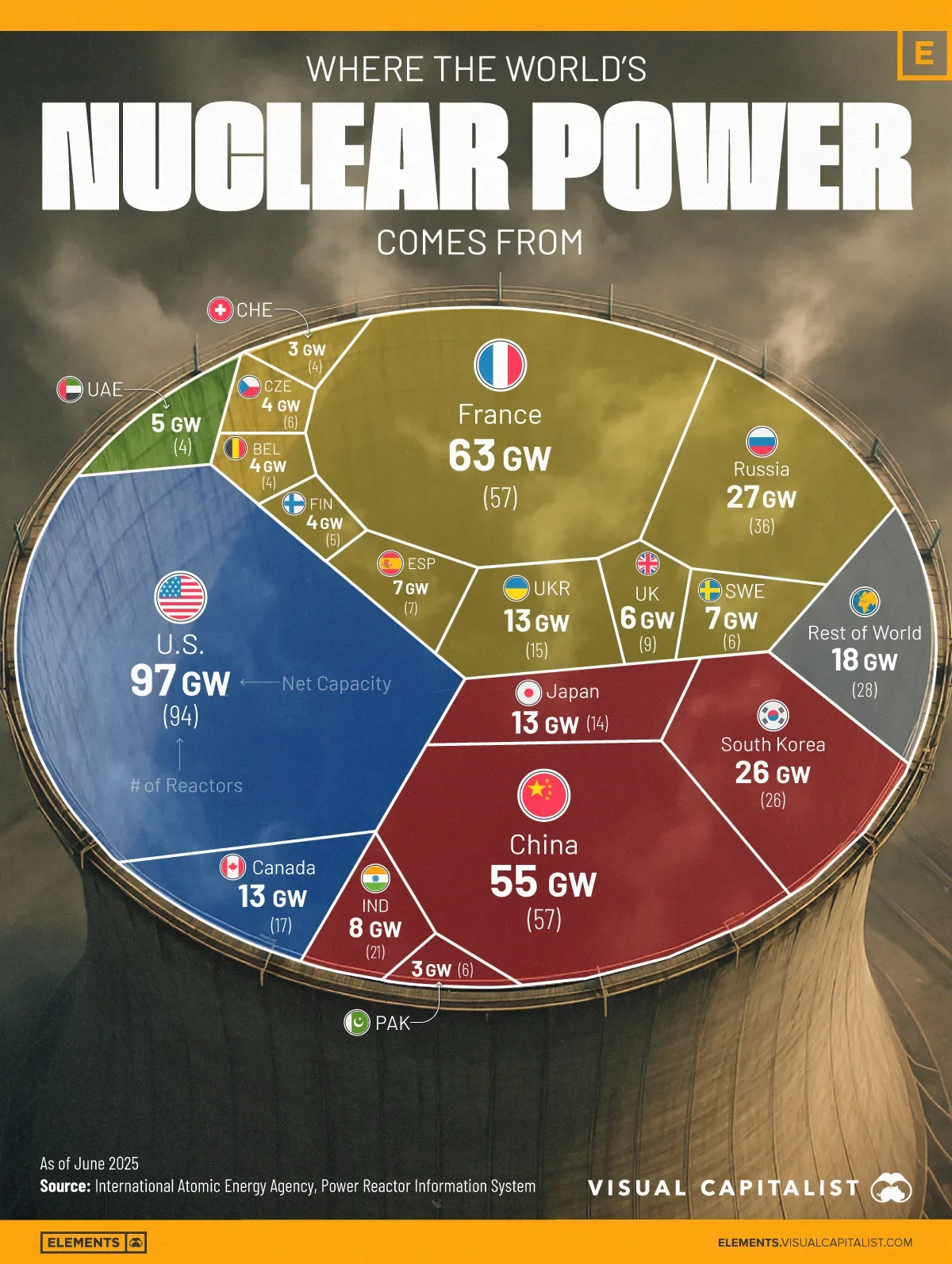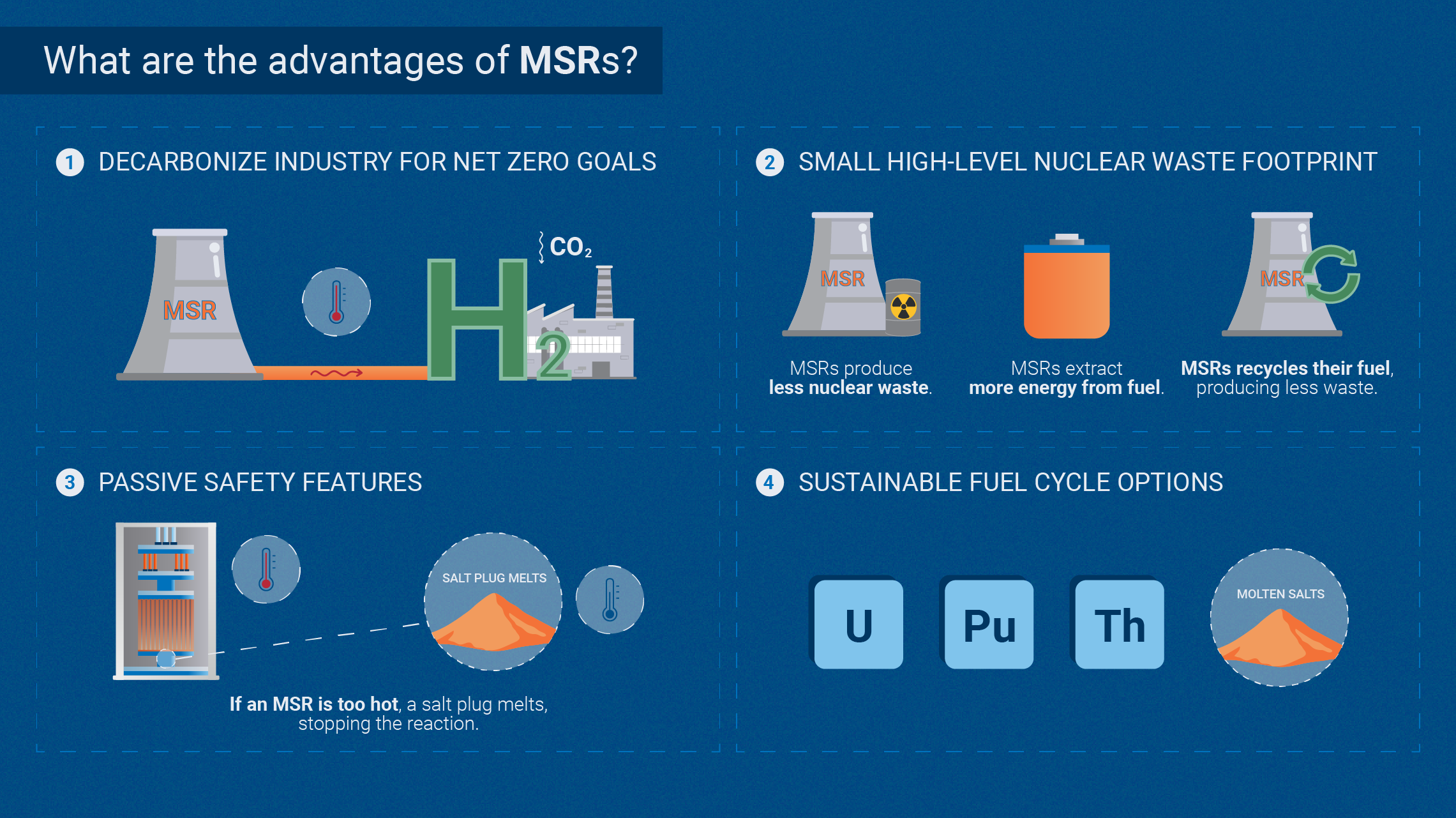China View: The New Nuclear Age
Lukáš Lehotský
Fizzled Out - The Current State of Nuclear Power
Far from the forests of Chernobyl or the coastline of Fukushima, a new age for nuclear power is dawning in Asia. Contrary to what many may think, nuclear power is part of the green revolution sweeping the world. Traditional nuclear powers such as the United States are losing their footing as leaders in the nuclear landscape.
In 2017, the largest American manufacturer and designer of nuclear reactors, Westinghouse, was pulled out of the nuclear construction industry by its parent company, Toshiba. The reasons for the decision were included high costs, repeated delays with construction projects, and a complex regulatory system. Demand plays a huge role in most manufacturing and construction projects.
Often times, a one-off project will run into high building costs and delays, because singular projects do not benefit from built-up experience and rely on sourcing single batch components that cannot benefit from an “economy of scale”. Nuclear energy projects have long suffered from this self-fueling cycle of underinvestment, causing higher costs, which causes more underinvestment.
Currently, China is building 29 new nuclear reactors. Whereas the United States, on the other hand, has no new planned reactors, and the second-highest builder of nuclear power is Russia, with five nuclear plants in progress. Because China is making an at-scale, coordinated effort to build up its nuclear power industry, it will benefit from the mass experience of building these specialized facilities. Companies that manufacture niche components for nuclear plants can lower costs, reduce production times, and innovate on existing designs. The Chinese nuclear energy program will also create a trained workforce that can work on new projects that would be impossible without specialty skills that only come from hands-on experience in this complex industry.
Visual capitalist
A New Nuclear
The long shadow of its Great Leap Forward meant that China is a latecomer to the nuclear industry. China’s first nuclear weapon test was in 1964, while its first nuclear reactor began construction in 1984 and was not completed until 1994. As China pivoted from a strict Marxist-Leninist economy to a hybrid marketized system, energy demands grew exponentially. Even today, China relies primarily on coal for its energy needs, with 60% of its power production coming from coal. As of 2025, nuclear power comprises 5% of all Chinese energy production. After the first generation of Chinese atomic plants came online in the 1990s, the Chinese government made discrete plans to increase production of these facilities and make a large investment in the technology. The success of the Daya Bay Nuclear plant, located just outside of Hong Kong and supplying 25% of the city's electricity, proved that nuclear power was a viable option for China’s energy needs. A majority of China’s existing reactors are imported designs from Canada and France. However, many planned plants are beginning to use Chinese designs and are some of the most advanced in the world. These designs include “breeder” reactors, which have a “closed loop” fuel cycle. In short, these reactors do not require additional inputs of radioactive material to function. They recycle fissile material in a closed cycle and nearly eliminate nuclear waste from the process. These designs are not new; the first was designed in the United States in the 1970s.
Another innovation China is implementing in its new push for nuclear energy is molten salt reactors.
International Atomic Energy Agency
Similarly, this technology was developed, but never fully deployed with domestic American reactor builds by the United States. The benefits of molten salt reactors include increased safety, higher energy efficiency, and the ability to use a variety of nuclear fuels that are much more abundant naturally. China is one of the first nations to manufacture these reactors at scale and prepare them for widespread deployment.
The most recent achievement for Chinese molten salt reactors was in April of 2025, when an experimental reactor was refueled without a shutdown. This is a huge achievement for the industry as it allows continuous operation and maintenance without disrupting energy supply. Innovations in nuclear power have been developing for decades in laboratories and universities across the world.
Due to the difficulties in building new nuclear power plants, these innovations had not been applied to the handful of new constructions. With China’s bet on nuclear power, the nation’s nuclear plants can take advantage of the collective achievements of global nuclear science. As China is leading the world in the new construction of nuclear plants, Chinese designs will become the standard template for new plants built across the world in the coming decades or even centuries.
Half-Life: Common Issues With Nuclear Power
While the Chinese government is making a large investment in nuclear energy, there are still vocal opponents to its use in the scientific and general community. The most common arguments against nuclear power are cost and safety. The cost of nuclear energy is much higher than all other forms of energy. Renewable energy has seen its cost decrease exponentially since 2000, in contrast to nuclear power remaining consistently expensive. Georgia’s Vogtle nuclear plant was estimated to cost $17 billion when construction began in 2009, but when it came online in 2024, it ended up costing over $30 billion. Solar energy is estimated to cost $25-$55 per MWh (Megawatt hour) while the cost for new nuclear power is estimated at $110 per MWh; A single MWh can power the average American home for about an hour or run two 60-watt light bulbs for over eight hours.
The challenge for modern nuclear projects is to leverage large investments and reactor orders to reduce construction costs and delays. China appears to think it can solve these problems with its large bet on nuclear energy, but only time will tell if that was a correct assumption. Nuclear safety is a more complex issue. The perception of nuclear energy as unsafe is because of very public incidents such as Chernobyl, 3-Mile Island, and Fukushima. However, it is important to consider that fossil fuels have much more frequent accidents that have resulted in much more devastation. For example, the 2010 Deepwater Horizon oil spill contaminated 43,300 square miles of ocean surface and 1,300 miles of coastline across five states.
There are also valid concerns about sourcing nuclear material for reactors. Uranium miners often suffer from acute radiation sickness and health problems related to mining the element. Clean-up of these mine sites can also be a source of concern, as they can be expensive and long-term projects that impact local ecosystems. If China continues its nuclear boom, it will also need to make innovations with its supply chain if the nation wants to address the traditional concerns regarding nuclear power.
Reaching For The Stars - Nuclear Fusion
Fusion power has been the dream of scientists across the world for more than 50 years. Unlike fission, the scientific principle behind traditional nuclear power that relies on splitting atoms, fusion is the combination of hydrogen atoms into a heavier helium atom. Fusion is the process that powers our Sun and other stars; notably, this process does not generate nuclear waste or radiation that could contaminate the environment and harm humans. While still in the early phase of development, fusion power is gradually progressing towards feasibility. The largest fusion reactors are in the United States, France, and China.
The largest is ITER in France, a global collaborative project with involvement of more than a dozen nations. Beyond ITER, China has the Experimental Advanced Superconducting Tokamak (EAST), which frequently breaks world records for plasma generation and duration of reactions.
Visual capitalist
Fusion power is a very expensive and complex process, one that requires consistent funding and staffing to be successful. Unlike projects in the United States or Europe, Chinese projects are consistently funded and managed through top-down schemes. The issue of profitability is less of a limiting factor for Chinese companies in this space. This results in greater progress in the nuclear space, which has a notoriety of cost overruns and death-by-a-thousand-cuts bureaucratic limbo.
Conclusion
The technological revolution of the 21st century is now being applied to nuclear energy, a seemingly forgotten power source that can rival other renewable resources like hydroelectric or solar power. With new designs and high-tech management systems, nuclear energy has never been safer or more efficient than it is today. China has made its nuclear goals very clear: to double its reactors and output by the middle of the century. With these goals comes another, even greater power source. Nuclear fusion, which has the potential to dwarf the power supply of any conventional energy system, appears to be nearing feasibility. Could the first deployed fusion plant be Chinese? Every day that passes seems to bring that reality closer to the present.




